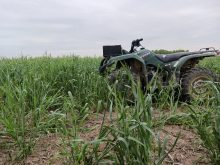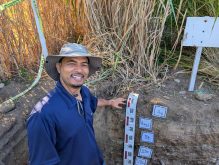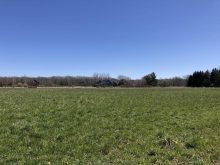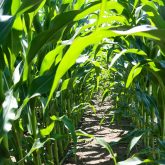It’s strip-till for no-tillers – with no tillage.
Sound confusing? Really, it’s not. Just ask Dave McEachren, or Dustin Mulock. The farmers both use biostrips to get some of their fields ready for planting. The results they’ve seen so far mean they will continue the soil-saving practice on their farms.
What it means: Strip tillage, where farmers till the strip they intend to plant but not the rest of the field, is increasingly popular as farmers try to find a compromise between tillage and no-till. Biostrips use aggressive-rooted, but easily killed by winter crops in the strip to be planted, and fibrous-rooted cover crop varieties, some of which survive winter, in between.
On Dustin Mulock’s farm near Woodville, they have moved from no-till to strip till and are now trying to get back to no-till. Biostrips maybe a route to that goal.
Mulock calls the plants in his rows to be planted “tillage plants” and include legumes and Phacelia, a cool season broadleaf with roots that grow 10 to 13 inches deep.
“No tillage can come close to what this does,” he said at the Innovative Farmers Association of Ontario conference in London. “This is tillage that captures carbon, rather than depleting it.”
Dave McEachren has been working with biostrips on his farm for three years. His father and uncle were early no-till adopters in 1980s on the family operation near Glencoe.
Read Also
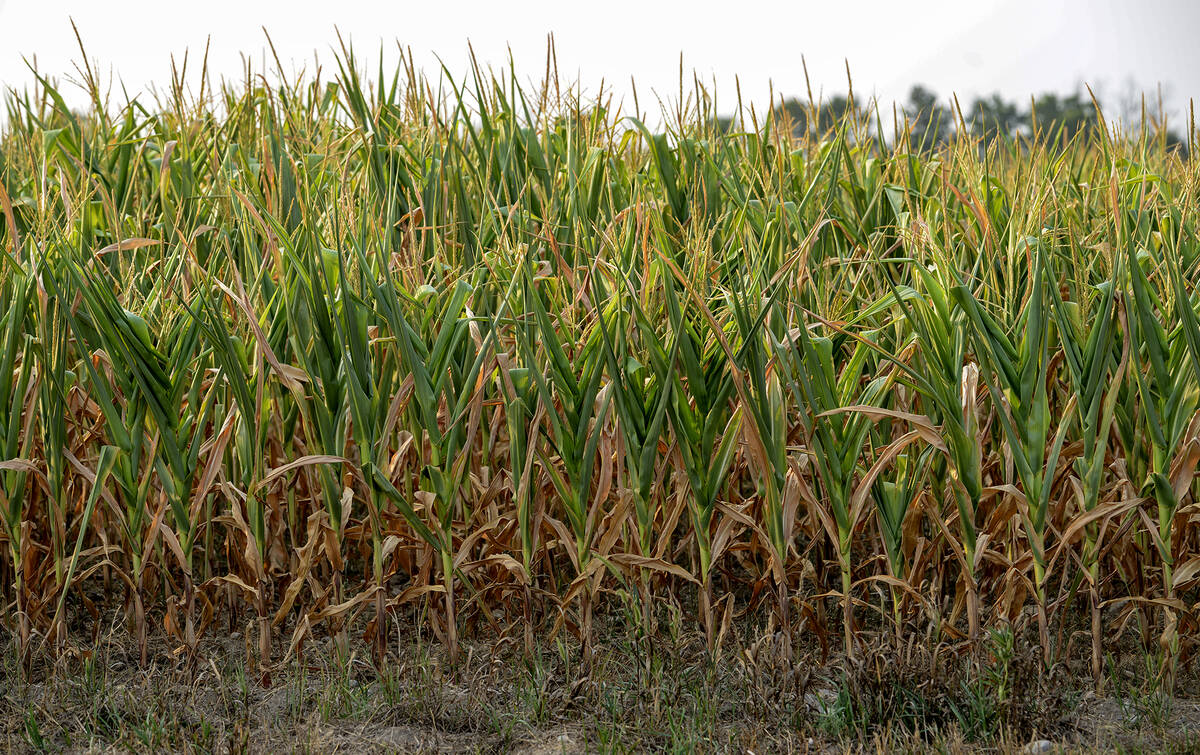
Extreme variability marks Ontario’s 2025 corn crop
The yield potential of Ontario’s 2025 corn crop was lost in some areas due to extreme dry conditions.
McEachren’s tillage plant of choice is radish, with large, aggressive tubers that break up the soil in the fall and rot away by planting time.
“It leaves a nice mellow strip,” he said.

Mulock plants eight-inch twin rows and the root from the cover crops entangle beneath the surface. Then, he sees the entire entangled root system lifted and fractured during winter’s freeze-thaw cycle.
Mulock says he had an 18-bushel advantage in his biostrips during a soybean trial in 2016 compared to no-till.
He says his family has found that it didn’t build organic matter in soil with no-till – that didn’t start until they also added cover crops.
McEachren’s family started using cover crops when it closed down its beef feedlot and reduced its herd of more than 100 polled Hereford cows to eight or 10 cows.
“What went with the cows?” McEachren asked. Manure and forages in the rotation.
Here’s how McEachren plants his biostrips:
- He added a Gandy unit onto his air seeder so that he could plant a second type of seeds. The tillage radish seed goes through the Gandy box.
- He plants twin 7.5 inch rows of radish in the ‘tillage’ strip seeded at 3.5 lbs per acre in order to create 30-inch rows for his corn.
- He plants twin 7.5” rows of cereal, rye, oats, annual rye grass, hairy vetch, red clover, sunflowers and peas in between the strips to be planted.
- His goal is to mix some species that will be killed during winter and some that will survive to provide a track for driving and living roots into the spring in the cover strip. He then terminates that strip, usually after planting the next crop.
- McEachren will make decisions on what will go into the complex mix based on cost of cover crop seed. If one of the cover crops in the mix gets too expensive he will replace it.
- He is pushing his biostrip planting to as early as he can, late July if he can.
- Sunflowers have been a good addition, as they are attractive to pollinators and they grow well and aggressively.
- Other farmers have questioned the large gap in the soil left when a tillage radish tuber rots, but McEachren has found that those holes collapse easily in the spring and during the planting pass.
McEachren says he’s seen no yield drag with the biostrip till system and so he plans to continue using it.





